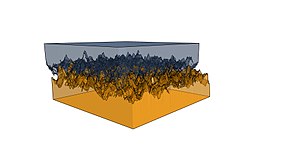Friction is a fundamental force that plays a crucial role in our daily lives, scientific understanding, and engineering applications. This force, which resists the sliding or rolling of solid objects over one another, is a complex phenomenon with far-reaching implications. Understanding the principles of friction, its characteristics, types, and effects is essential for various fields, from automotive engineering to biomechanics.
At its core, friction arises from microscopic interactions between surface asperities of two contacting bodies. These interactions give rise to tangential forces that oppose the relative motion of the bodies. The laws of friction, proposed by Guillaume Amontons in 1699, lay the groundwork for our understanding of this phenomenon. These laws establish that the friction force is independent of the nominal contact area between the bodies and is directly proportional to the surface-normal component of the force.
Friction can be classified into different types based on the conditions under which it occurs. Static friction acts between surfaces at rest with respect to each other, preventing motion. Kinetic friction arises between surfaces in relative motion, while rolling friction occurs when objects like wheels or balls roll freely over a surface. Each type of friction has distinct characteristics and implications in various scenarios.
Factors influencing friction include the materials, geometries, and surface roughness of contacting bodies, as well as operating conditions and environmental factors. Friction increases with load and surface roughness but can be mitigated by using lubricants that form a thin film between surfaces. Tribometers are instrumental in quantifying frictional behavior by measuring lateral force (friction) and normal force (load) during relative motion between bodies.
In real-world applications, friction plays a critical role across industries like automotive engineering, aerospace, manufacturing, and biomechanics. Minimizing friction in engine components can enhance fuel efficiency and prolong engine lifespan. Controlling friction between cutting tools and workpieces improves machining accuracy while understanding how joint surface friction influences movement and stability in biomechanics.
Friction is not only a force that resists motion but also a force that enables essential functions like walking or driving. While it can be challenging when trying to move heavy objects or cause wear and tear on surfaces, it is a force that can be managed and optimized for better performance. By delving into the complexities of friction, we gain insights into optimizing performance, enhancing efficiency, and advancing technological innovation across various disciplines.
- Friction – Wikipedia: This Wikipedia page provides a comprehensive overview of friction, covering its definition, types, and consequences. It explains the role of friction in converting kinetic energy to thermal energy and its impact on wear and performance degradation. The page also discusses the non-conservative nature of friction and its significance in various fields such as engineering and physics[1].
- Friction – Simple English Wikipedia: The Simple English Wikipedia page on friction offers a basic explanation of friction as a force that acts to stop the movement of two touching things. It describes the energy lost to friction, which is converted into sound and heat, and briefly mentions the two kinds of friction[2].
- Friction Loss – Wikipedia: This Wikipedia page focuses on the concept of friction loss in different contexts, including fluid flow, mechanical systems, and economics. It explains friction loss in fluid flow as the head loss in a containment due to the effect of the fluid’s movement. The page also discusses frictional loss in mechanical systems and its significance in engineering and economics[3].
- Belt Friction – Wikipedia: The Wikipedia page on belt friction delves into the friction forces between a belt and a surface, such as a belt wrapped around a bollard. It provides an equation to model belt friction and discusses factors that determine the friction coefficient. The page also highlights the applications of understanding belt friction in activities such as sailing and mountain climbing[4].
Citations:
[1] https://en.wikipedia.org/wiki/Friction
[2] https://simple.wikipedia.org/wiki/Friction
[3] https://en.wikipedia.org/wiki/Friction_loss
[4] https://en.wikipedia.org/wiki/Belt_friction
Friction is the force resisting the relative motion of solid surfaces, fluid layers, and material elements sliding against each other. Types of friction include dry, fluid, lubricated, skin, and internal.


Friction can have dramatic consequences, as illustrated by the use of friction created by rubbing pieces of wood together to start a fire. Kinetic energy is converted to thermal energy whenever motion with friction occurs, for example when a viscous fluid is stirred. Another important consequence of many types of friction can be wear, which may lead to performance degradation or damage to components.
Friction is a non-conservative force – work done against friction is path dependent. In the presence of friction, some kinetic energy is always transformed to thermal energy, so mechanical energy is not conserved. Friction is not itself a fundamental force. Dry friction arises from a combination of inter-surface adhesion, surface roughness, surface deformation, and surface contamination. The complexity of these interactions makes the calculation of friction from first principles difficult and it is often easier to use empirical methods for analysis and the development of theory.
English
Etymology
From Middle French friction and directly from Latin frictionem, nom.